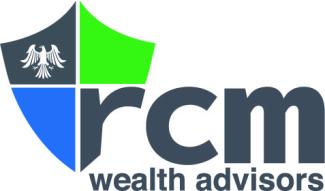
How to Identify Virtuous Cycles
RCM Managed Asset Portfolio
By Christopher Chiu, CFA
Over the Long Run
In 1993, Starbucks opened a store in Chicago’s O’Hare airport for the first time. It quickly became one of the busiest locations in the company. Few would have thought that coffee, which most people at the time made and drank at home, would become a growth business. But as is the case with the most successful consumer companies, Starbucks offered a product that people didn’t know they wanted. And for the next two decades Starbucks continued to open new stores throughout the United States as people learned of a new way to enjoy coffee.
One major cause of Starbuck’s sales growth in its early days was just the growth of new locations. This sales growth in turn drove a growth in company earnings. The earnings were then reinvested in the company in the form of new store locations which led to more earnings growth. It became a virtuous cycle. Some of the best stock returns occur when a virtuous cycle plays out consistently over a long span of time.
How to Identify Virtuous Cycles
One of the best indicators of a virtuous cycle in action is a business having a high return on equity (or ROE) for many years. What a continually high ROE means, in the simplest terms, is that a business is able to earn a high return on how it invests in its business and that it can sustain this high return for many years. This was Starbucks.
Starbucks earned a high rate of return on its investments such as new stores (or new menu items) and it was able to plow back the money it earned into similar opportunities for more of the same growth. Starbucks’s ROE was high for many years because the opportunity was huge; there was a long runway of people who had not yet experienced the enjoyment of having coffee outside their homes. This is not to say it was easy for Starbucks—they still had to execute. But they did not have to reinvent the wheel every year to garner a high return on equity. They simply had to get their existing products to people in different geographic areas who had not yet experienced them.
While stock prices can wobble around in the short term, a continually high ROE will have a positive, long-term, determining effect on the stock price. In the short term, there are many things that cause the stock price to move around. In the short term, stock movements are based on little bits of news that may be construed correctly or incorrectly about the future. Added to these are bits of news about the economy and interest rates, factors that can affect business behavior. So, stock prices tend to move because they reflect opinions which can change as quickly as the events which cause them. But what investors should always have in mind is that behind the stock price there is an operating company that is or is not making sales, that is or is not growing earnings after all the costs, expenses, and expenditures have been taken out.
In the long run—and I mean 10 years or more—the stock will return what the company returns on its equity, its ROE. This makes sense intuitively. If the stock price reflects a company’s value or what it is able to earn in the future, then in the long run the stock price should grow at the rate of its increasing earning power, which is its reinvestment rate or its ROE.
Learning this basic fact had a profound effect on how I view investment returns. It turned my focus mostly to looking at the fundamental factors of a business. This is because over the course of 10-20 years, the other factors even out—there is good news and bad news, high interest rates and low interest rates, good economic environments and bad ones, stocks being undervalued and overvalued. But what is left is the most overwhelmingly important factor—the compounded growth of the business, which is where most of the justified value of the stock price comes from over time. If we were to trace back all the great investments over the past fifty years almost all would exhibit a high average ROE for a decade or more. For example, UNH exhibits this characteristic, so has Visa, and Apple and Google, and so also has Nivida and Facebook, albeit with more ups and downs.
When we see an investment struggle, it is because its business is struggling and that is usually reflected in its ROE, which was once high but has experienced a few years of low returns and has not been able to bounce back to the levels it once attained. Intel is a company which used to have a high and constant ROE and now has fallen off, as reflected in its stock price. And the same is true with Disney as it continues to lose subscribers from ESPN, it’s cash cow.
One of the things we look for at RCM Wealth Advisors in our stock selection process is either the existence of a fairly high ROE or the potential to have a high, consistent ROE in the future. A consistently high ROE keeps a stock increasing in value over many decades over the various life stages of a company.

